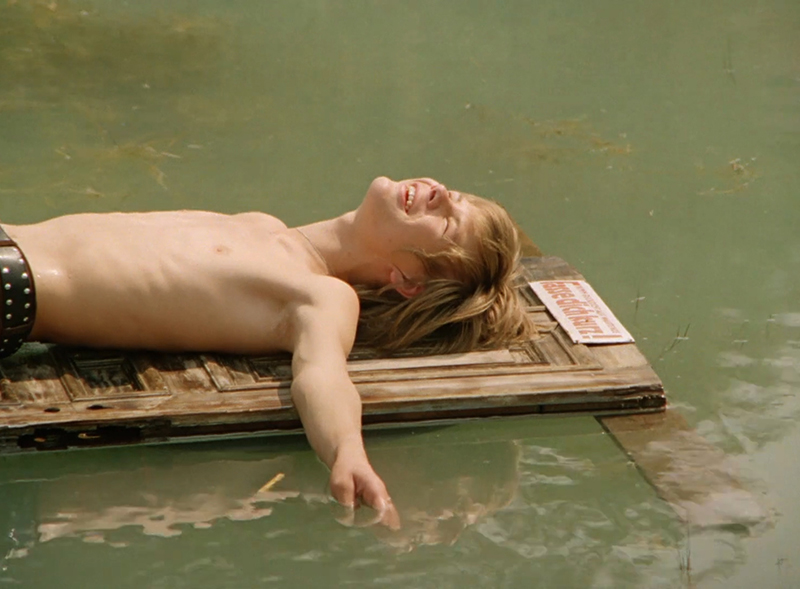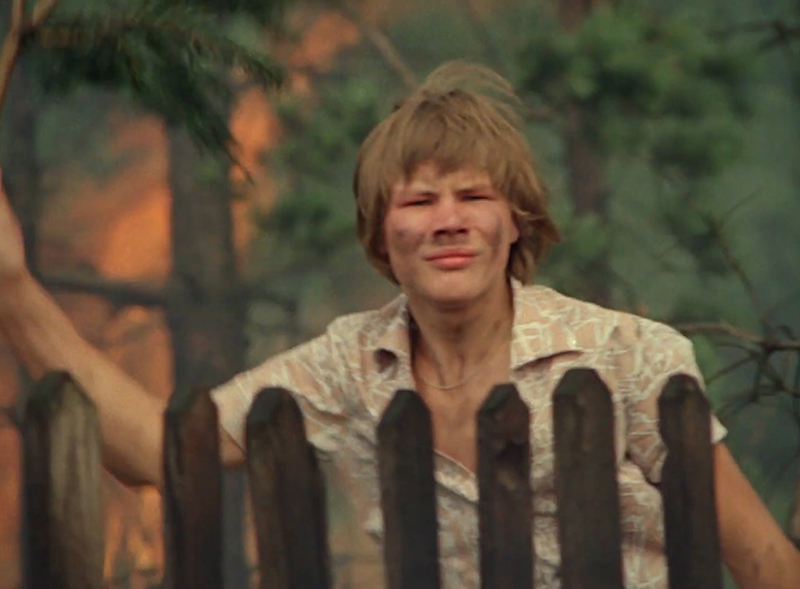
Growing up is always painful, no matter where you’re from. There’s a point in life when you have to face the music, recognize you’re no longer a kid, and change your behavior. For fifteen-year-old Kurbel, that time comes after he nearly destroys the local forest.
East Germany lasted forty years. During that time—DEFA, the state’s film production company—made roughly 950 films. Not many when you consider that the film studios in India make more movies than that in a year.1 Nonetheless, during those years, they made several movies exploring the hopes, fears, and dilemmas faced by young people in the GDR. These movies range from the problems faced by the very young (Sabine Kleist, Age 7) to those on the cusp of adulthood (I Was Nineteen) and everything in between.
Damn It, I’m Grown Up (…verdammt, ich bin erwachsen) is about a fifteen-year-old everyone calls “Kurbel” (Ralf Schlösser). Kurbel lives in a little village in Lusatia. Kurbel has a pretty cushy existence. He spends his days lying on his raft in the local pond, thinking about his girlfriend Daniela (Angelika Herrmann), and enjoying nature. After he nearly sets the nearby forest on fire and then hides from everyone, his perfect world starts to crumble. Daniela, whose father is the local forest ranger, is disgusted with his irresponsibility and breaks things off with him. Meanwhile, the entire village is about to be disrupted by the construction of open pit mine that threatens to destroy Kurbel’s little paradise.
The film is based on the novel Der Riese im Paradies (The Giant in Paradise) by Joachim Novotny. Novotny grew up in Lusatia and used the book to express his concerns about the mining of lignite there, which threatened to destroy the area’s natural beauty. 2 He attended the Karl Marx University in Leipzig (now just Leipzig University), and began his career as an editor at a publishing house. From 1963 until 2001, Novotny wrote twenty books. Shortly before the Wende, an accident left him paraplegic. He died in Leipzig, January 13, 2014.
Although director Rolf Losansky made a few films for adults, his forte was children’s films. He grew up in the Dammvorstadt region of Germany (now Słubice, Poland). He took an apprenticeship as a printer in Frankfurt (Oder), but then studied medicine for a few semesters before finally deciding to study filmmaking at the German Academy for Film Art in Potsdam-Babelsberg. There, he studied under Kurt Maetzig, Martin Hellberg, and Richard Groschopp. After working as an assistant director for Frank Beyer and Günter Reisch, he began directing his own feature films in 1963, starting with The Secret of the Seventeen (Geheimnis der 17) in October of that year, followed by The Quest for the Bird of Many Colors (Die Suche nach dem wunderbunten Vögelchen) a few months later. Losansky had a knack for making films for children that didn’t talk down to them. In an interview, he said “I don’t want to portray the adult world as foreign to children. They have to go there, they want to go there” (“Die Erwachsenenwelt möchte ich nicht als fremd hinstellen für Kinder. Da müssen sie mal hin, dort wollen sie hin”). His films were very well-known in East Germany include A Snowman for Africa (Ein Schneemann für Afrika), The School Ghost (Das Schulgespenst), Moritz in the Advertising Column (Moritz in der Litfaßsäule), Farewell Disco (Abschiedsdisco—also based on a popular book by Joachim Novotny), and Zirri, the Cloud Lamb (Zirri – das Wolkenschaf). After the Wende, he continued to make childrens’ films, including Friedrich and the Enchanted Burglar (Friedrich und der verzauberte Einbrecher), which was co-written by the book’s author Christa Kozik, and Hans in Luck (Hans im Glück), based on the Grimms fairytale.
This was Ralf Schlösser’s first role in a film, and casting an unknown to star in a movie is always a risky proposition. Like many new actors, he brings an unpolished effectiveness to the part that a more experienced actor couldn’t have matched. He only appeared in one TV show after the Wende. Likewise, co-star Angelika Herrmann didn’t have much of a career in films. Damn It, I’m Grown Up was her only feature film. She appeared in a few TV-movies for DFF, but stopped appear in movies after 1978.
Beyond the young leads, the cast for Damn It, I’m Grown Up is exceptional. Some of the best actors from DEFA appear in this film, including Helmut Schreiber as the drunken neighbor Paul Honko, Karla Runkehl as Kurbel’s mother, Jutta Wachowiak as Kindergarten teacher Kandidel, and Herbert Köfer as Kurbel’s father. Playing the put-upon wife of the drunken Paul Honko is Ruth Kommerell. Her daughter Blanche Kommerell (famously the star of Little Red Riding Hood—Rotkäppchen) also appears in the film as a Kindergarten teacher.
The cinematography is by Peter Süring, who is often overlooked, working in the shadow of other great East German cinematographers such as Werner Bergmann, Karl Plintzner, and Roland Dressel; not to mention old hands such as Bruno Mondi, Ernst Kunstmann and Robert Baberske. His work here is good, evoking Kurbel’s idealized view of the world around him with dreamy shots of life in a small town.
One of the most fun aspects of this film is the time period in which it was made. 1974 was a banner year for bad fashion (some might say great fashion). Polyester prints had taken over the industries—east and west—and skirts were still very short (but about to get longer). Beiges, oranges, and yellows were everywhere. The only thing missing here is the preponderance of platform shoes that you see in the American movies from the time. There are some great shots of kitchenware and lighting fixtures as well.
While not a must-see film, Damn It, I’m Grown Up is a nearly perfect time capsule of a certain time and place in East Germany. For that reason alone it is worth checking out.
Stream this movie (German only).
1. This number does not include the animated films, documentaries, and made-for-TV films from DFF.
2..This was a serious problem in East Germany. Lacking the availability of better fuels or the resources to build more efficient power system, East Germany relied heavily on lignite, which meant lots more pollution. Since reunification, Germany has tried to reduce its dependence on lignite, but hasn’t yet eliminated it completely.
© Jim Morton and East German Cinema Blog, 2018. Unauthorized use and/or duplication of this material without express and written permission from this site’s author and/or owner is strictly prohibited. Excerpts and links may be used, provided that full and clear credit is given to Jim Morton and East German Cinema Blog with appropriate and specific direction to the original content.


